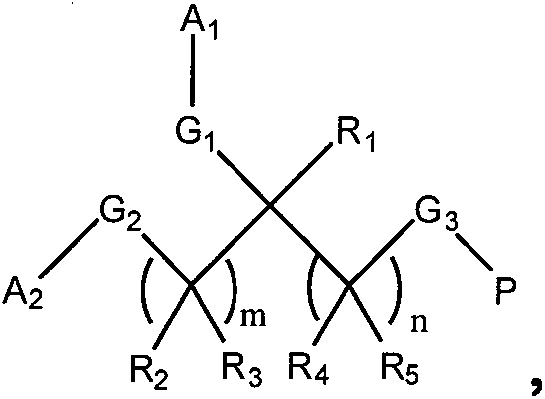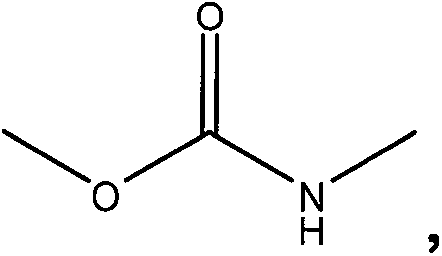Protein-polymer conjugates
A conjugate and protein technology, applied in the field of protein-polymer conjugates, can solve the problems of low water solubility and short protein half-life
- Summary
- Abstract
- Description
- Claims
- Application Information
AI Technical Summary
Problems solved by technology
Method used
Image
Examples
preparation example Construction
[0087] Preparation of diPEG aldehyde
[0088]
[0089] Su = succinimidyl
[0090] 20 kD PEGO(C=O)OSu was prepared from 20 kD mPEGOH purchased from SunBio Inc., CA, USA according to the method described in Bioconjugate Chem. 1993, 4, 568-569.
[0091] To a flask containing 20 kD PEGO(C=O)OSu (1.72 g, 86.0 μmol) was added 6-(1,3-dioxolan-2-yl)hexane-1,5-diamine in dichloromethane (11.97g solution contains 9.03mg diamine, 47.8μmol). After complete dissolution of PEGO(C=O)OSu, N,N-diisopropylethylamine (79 μL, 478 μmol) was added. The reaction mixture was stirred at room temperature for 24 hours, then methyl tert-butyl ether (200 mL) was added dropwise with stirring. The resulting precipitate was collected and dried under vacuum to give the diPEG acetal as a white solid (1.69 g, 98%).
[0092] 1 H NMR (400MHz, d 6 -DMSO) δ7.16(t, J=5.2Hz, 1H), 7.06(d, J=8.8Hz, 1H), 4.76(t, J=4.8Hz, 1H), 4.10-3.95(m, 4H), 1.80-1.65 (m, 1H), 1.65-1.50 (m, 1H), 1.48-1.10 (m, 6H).
[0093]...
PUM
 Login to View More
Login to View More Abstract
Description
Claims
Application Information
 Login to View More
Login to View More - R&D
- Intellectual Property
- Life Sciences
- Materials
- Tech Scout
- Unparalleled Data Quality
- Higher Quality Content
- 60% Fewer Hallucinations
Browse by: Latest US Patents, China's latest patents, Technical Efficacy Thesaurus, Application Domain, Technology Topic, Popular Technical Reports.
© 2025 PatSnap. All rights reserved.Legal|Privacy policy|Modern Slavery Act Transparency Statement|Sitemap|About US| Contact US: help@patsnap.com



